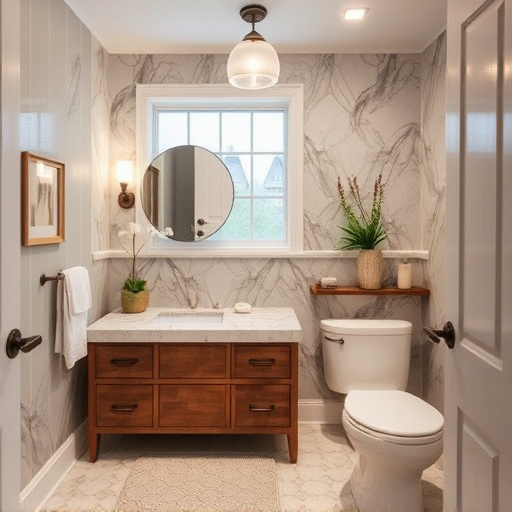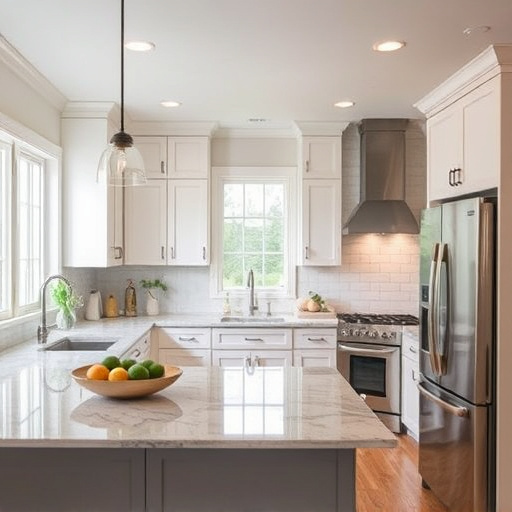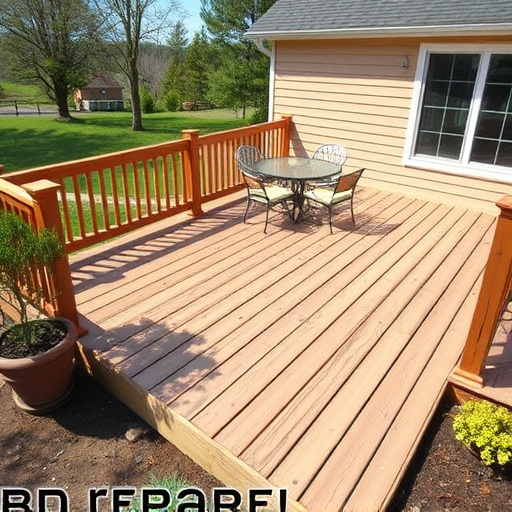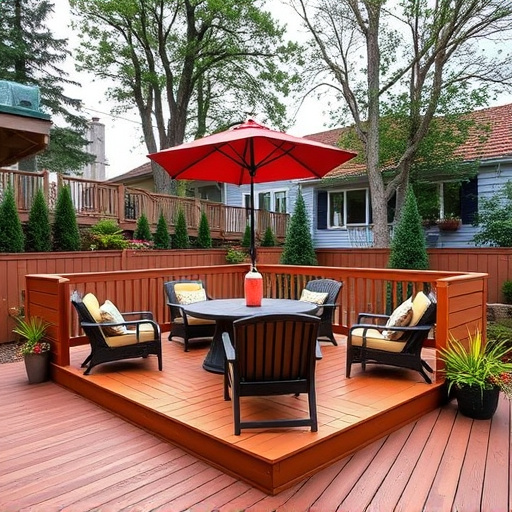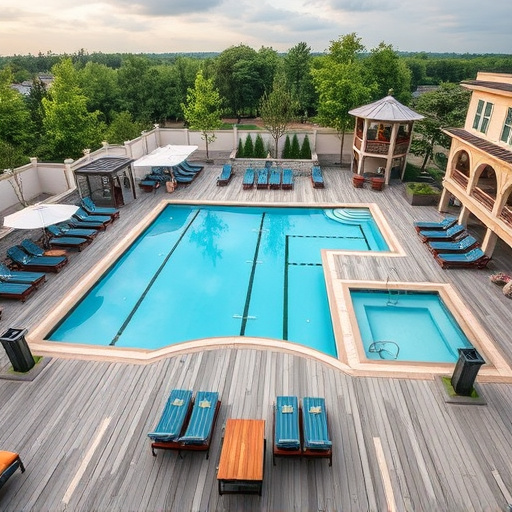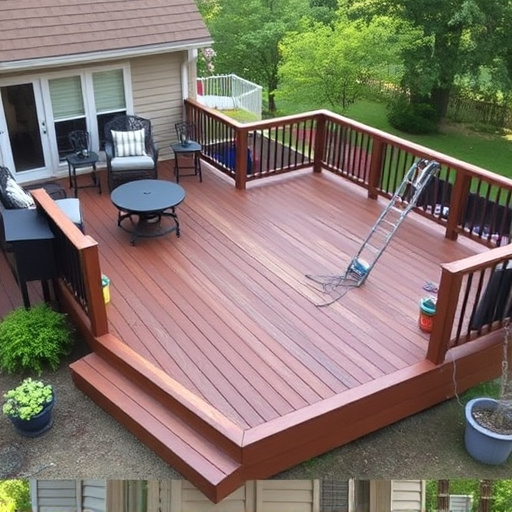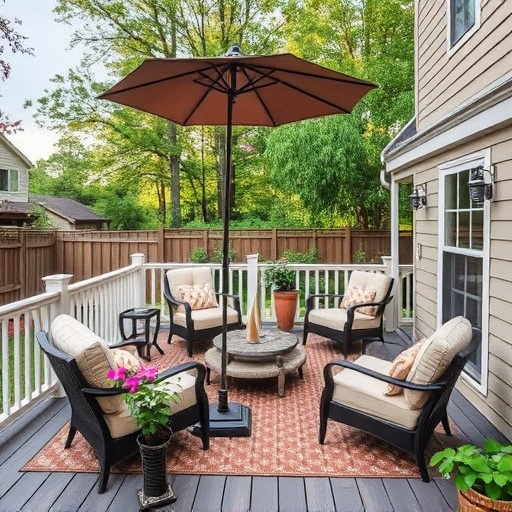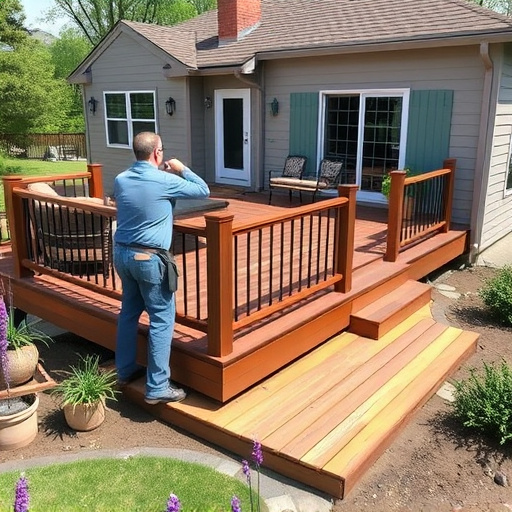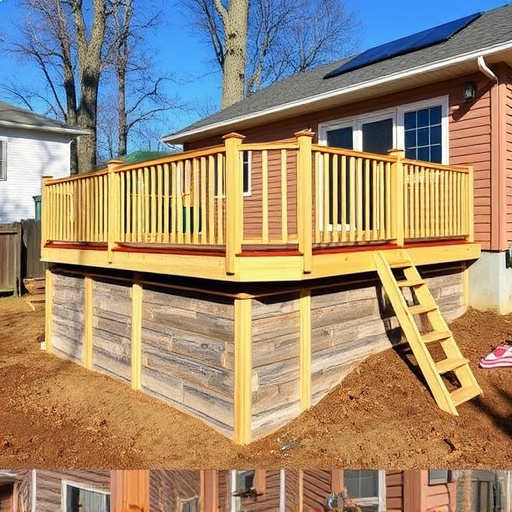Raised and multi-level decks require specific waterproofing solutions due to increased moisture exposure. Using water-resistant materials like PVC or TPO membranes, high-quality underlayment, and proper installation techniques prevents rot, mold, and mildew. Consulting roofing experts and incorporating slope for drainage enhances deck longevity and aesthetic appeal.
Elevate your outdoor living space with waterproof decking for raised and multi-level decks. This comprehensive guide explores the essential aspects of creating a dry, durable, and aesthetically pleasing deck environment. From understanding specific waterproof decking needs for raised decks to discovering effective material options and installation best practices, this article equips you to make informed decisions. Achieve longevity and enhance your outdoor oasis with proven waterproofing solutions.
- Understanding Waterproof Decking Needs for Raised Decks
- Material Options for Effective Waterproofing Solutions
- Installation Tips and Best Practices for Longevity
Understanding Waterproof Decking Needs for Raised Decks
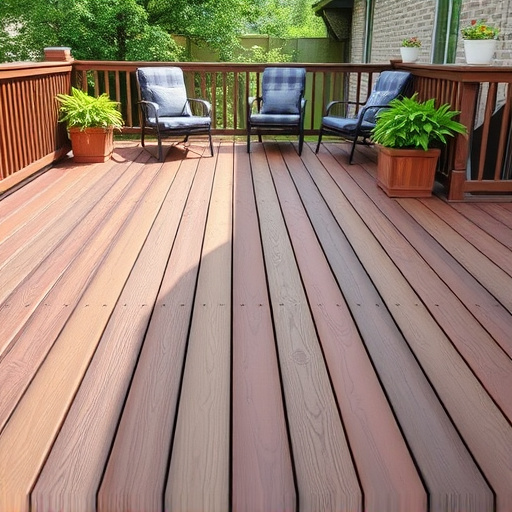
Raised and multi-level decks present unique challenges when it comes to waterproofing. Understanding the specific needs for these structures is crucial to ensuring a durable and long-lasting outdoor living space. Waterproof decking solutions must account for the deck’s elevated position, which exposes it to increased moisture levels from rain, snowmelt, and humidity. Unlike standard decks, raised decks require materials that can withstand constant contact with water without absorbing it, preventing rot, mold, and mildew growth.
The integration of siding installation or the use of commercial-grade siding and gutters can be part of a comprehensive waterproof decking system. These components help to direct water away from the deck’s surface, reducing the risk of water damage. By addressing these unique requirements, homeowners and contractors can enhance the structural integrity and aesthetic appeal of raised and multi-level decks, ensuring they remain in top condition for years to come.
Material Options for Effective Waterproofing Solutions
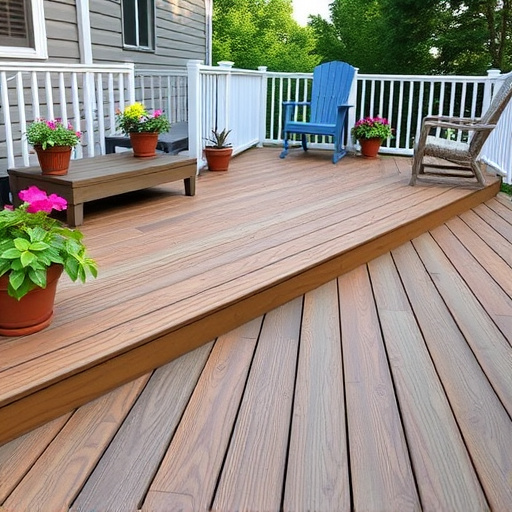
When it comes to choosing materials for effective waterproofing on raised or multi-level decks, the options are diverse and tailored to various needs and preferences. A key consideration is selecting a durable and flexible membrane that can withstand environmental elements while protecting the deck structure. Modern waterproof decking systems often incorporate high-performance, synthetic materials like PVC (polyvinyl chloride) or TPO (thermoplastic olefin). These substances offer exceptional resistance to water intrusion, UV radiation, and extreme temperatures, ensuring the deck remains dry and structurally sound for years.
Additionally, incorporating a robust barrier system, such as a well-installed, high-quality underlayment, is essential. This secondary defense against moisture can be made from materials like felt or specialized synthetic sheets, providing an extra layer of protection beneath the decking boards. Combining these innovative materials and careful installation methods ensures that any deck, regardless of its height or design complexity, benefits from superior waterproof decking solutions, enhancing both its longevity and aesthetic appeal. Remember, consulting with a roofing expert can provide valuable insights tailored to your specific project requirements, especially when considering residential siding replacement or other structural enhancements.
Installation Tips and Best Practices for Longevity
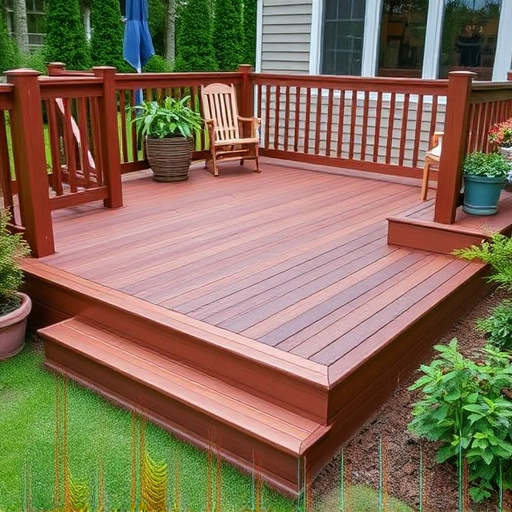
When installing a waterproof deck for your raised or multi-level decking project, proper technique is key to ensuring longevity. Begin by preparing the surface thoroughly; this includes cleaning and checking for any debris or existing damage. A level subfloor is essential, as it provides a solid foundation for your new deck. Use high-quality fasteners and make sure they’re properly secured, as weak connections can compromise the entire structure over time.
For optimal results, consider using specialized waterproof decking materials designed to withstand the elements. Ensure proper drainage by incorporating a slope in your design; this prevents water accumulation and reduces the risk of rot or mold. Regular maintenance is also crucial—inspect for any signs of wear and tear and address issues promptly. Think about protective coatings or sealers that not only enhance aesthetics but also safeguard against environmental damage, much like how residential siding or roofing services protect homes from weather extremes.
When considering a durable and low-maintenance solution for your raised or multi-level deck, choosing the right waterproof decking is key. By understanding your specific needs, exploring diverse material options, and adhering to best installation practices, you can create an outdoor living space that not only enhances your home’s aesthetic but also stands the test of time, even in the face of moisture. Implement these strategies for a successful, long-lasting deck transformation.
